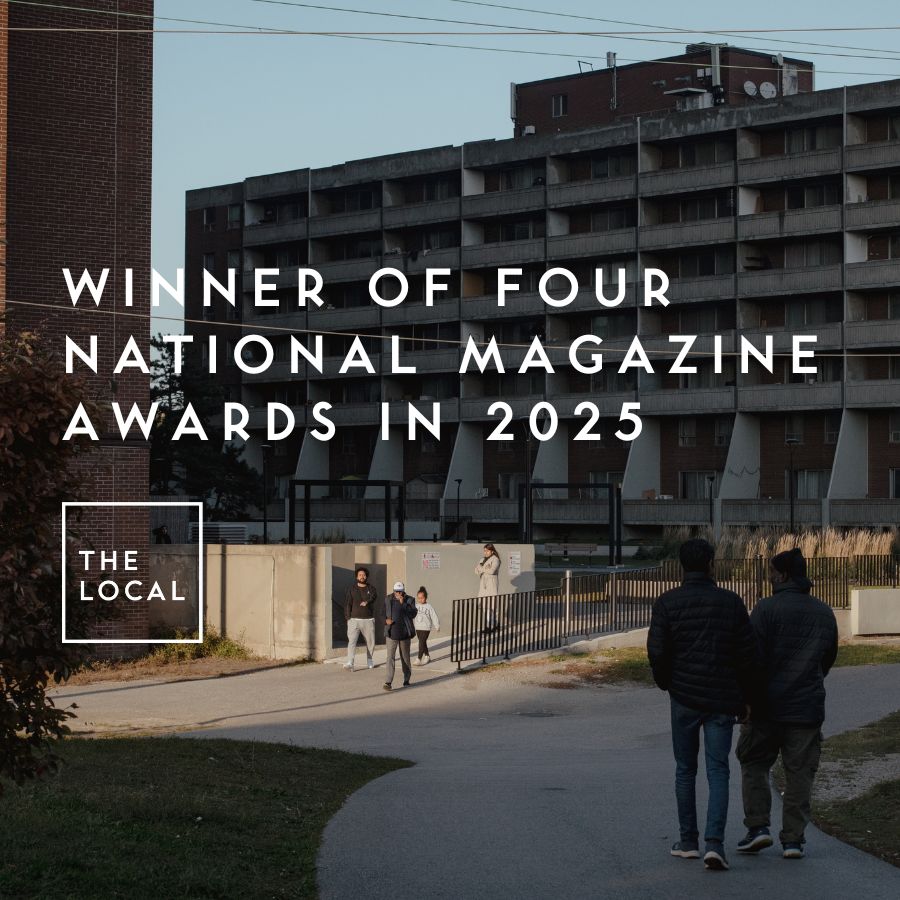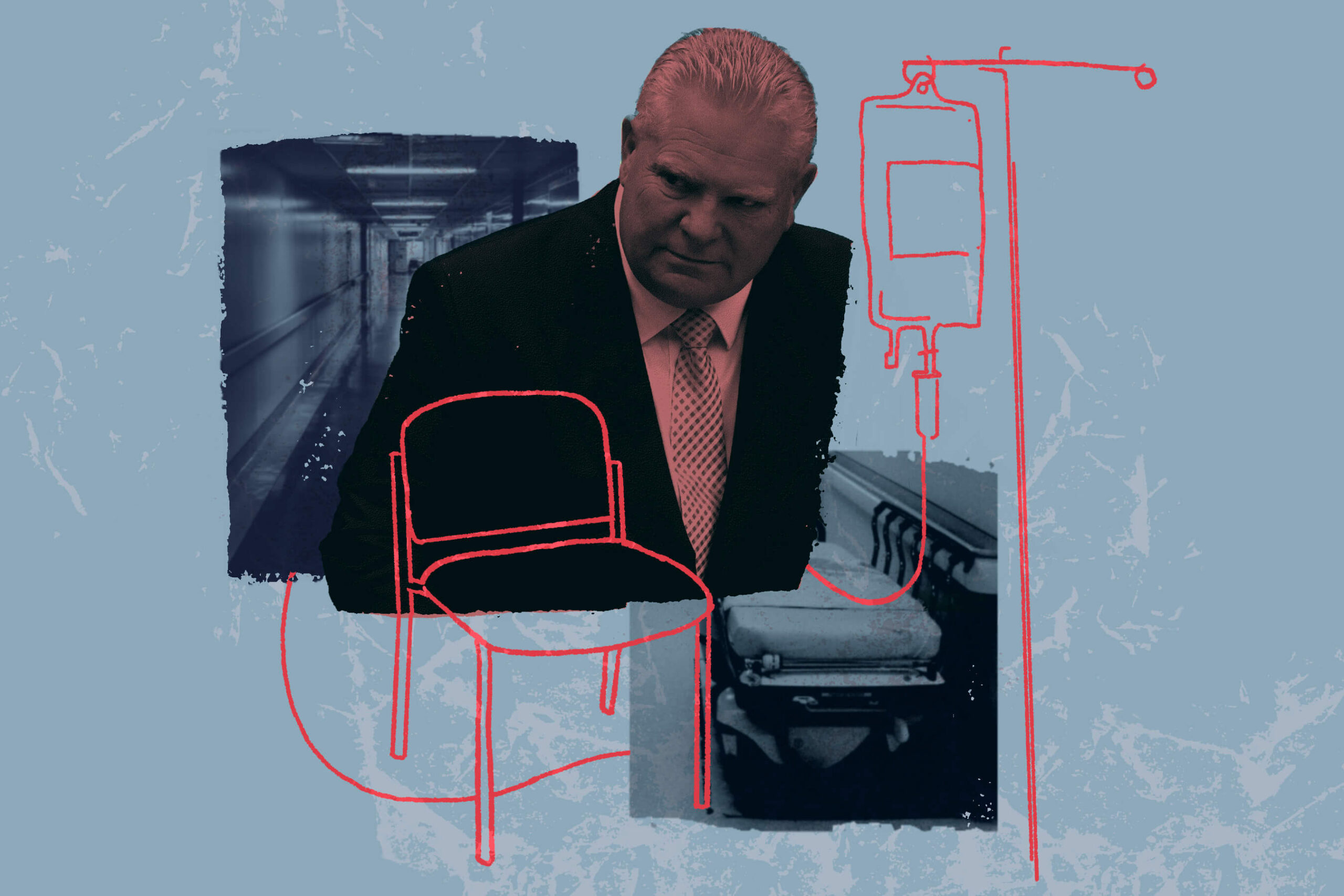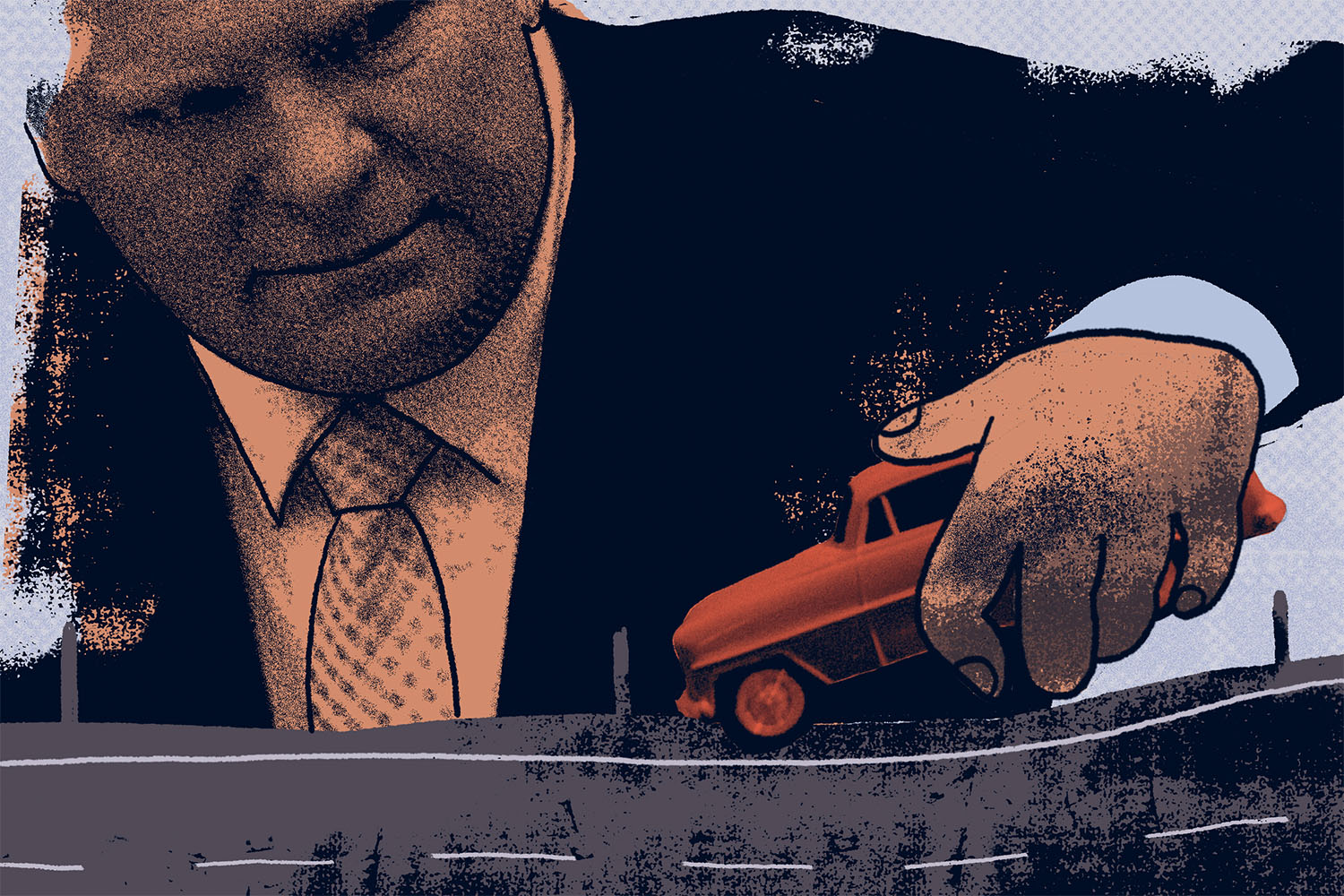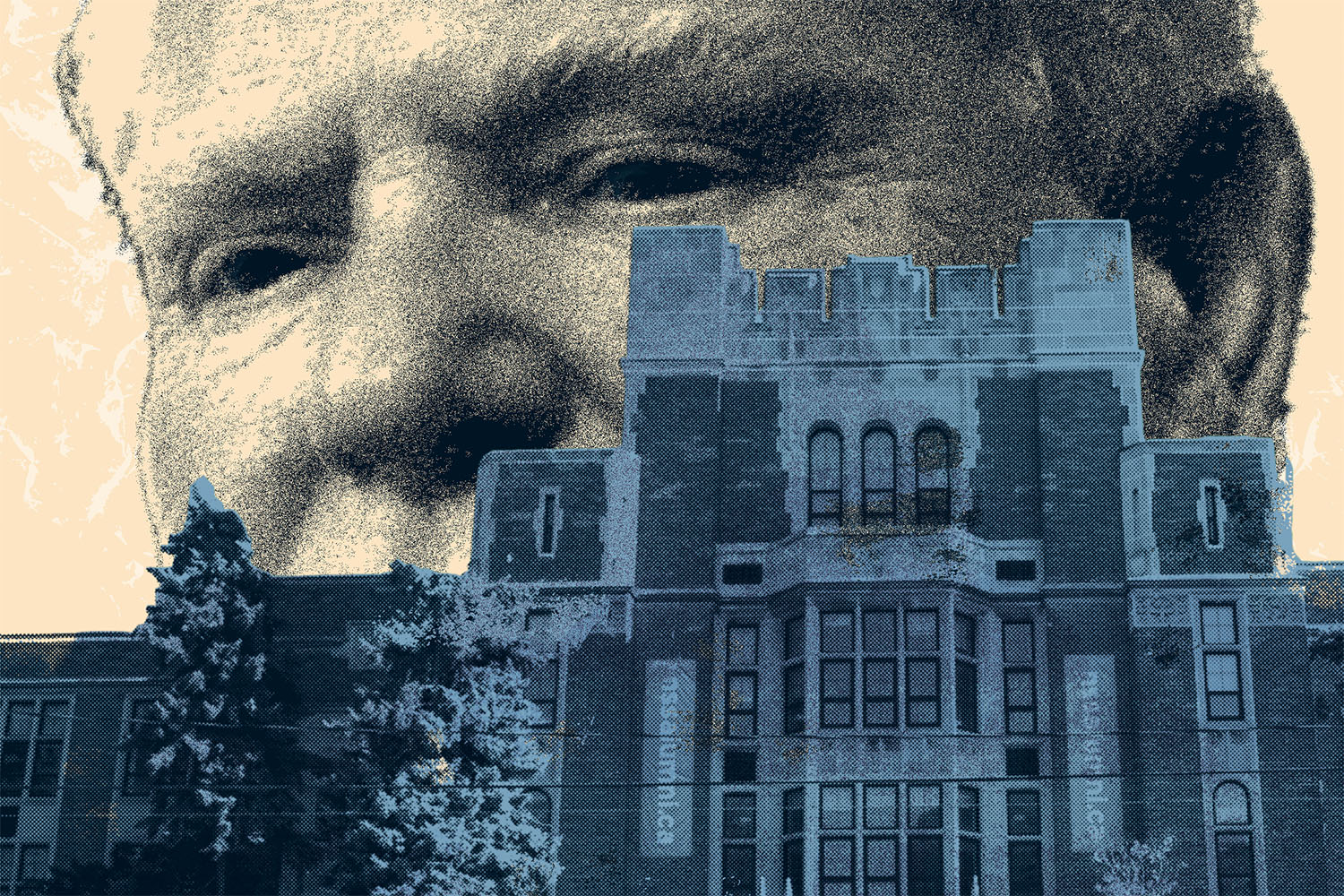
Compared with the physical state of other schools in the Toronto District School Board, Northern Secondary School—the high school that Jessica Miklos’s eldest daughter attends—isn’t the worst. Out of the board’s 579 schools, nearly half of which were built before 1965, it’s not even ranked among the top five buildings that need renovating or replacing.
Still, when Miklos, the co-chair of Northern Secondary’s school council, starts listing off all the problems with the facility, her voice conveys her incredulity.
The school, located on Mount Pleasant Road near Eglinton Avenue East, is a brick building built in 1930 whose stately exterior belies a crumbling core. It has three boilers, Miklos explained, two of which are broken. So the remaining boiler is cranked way up, heating the building unevenly and forcing some students to take classes in the hallway because their rooms are sweltering.
Many of the windows are broken, too, she said; they’re so old that the glass no longer meets the frames. There are visible holes in the roof. The courtyard needs repairs. In the warmer months, the school gets so hot that students have gotten sick from the heat.
Northern Secondary, which has roughly 1,750 students from grades 9 to 12, is situated in one of Toronto’s wealthier neighbourhoods. However, funds raised by parent councils can’t be used toward school facilities, so the building continues to slide into disrepair. Its condition is measured by something called a Facility Condition Index (FCI), calculated by dividing the school’s renewals backlog, or all the repairs that are needed, by the replacement value of the school. An FCI above 65 percent is generally considered “critical.” Northern Secondary’s FCI is 96.6 percent.
“It’s ridiculously bad,” Miklos said. But there are multiple schools in the district that are in worse shape, which means Northern Secondary is in line behind them for repairs and renewal projects. “It means that if we want to solve the problem for our school, we have to solve it for the schools that are even worse than ours first.”
That’s why Miklos got riled up when she read the latest list of school projects to receive money from the province’s Capital Priorities Program. That program funds a select number of the most urgent projects for new school buildings, expansions, and renovations that are identified and submitted by school boards across Ontario each year. This January, accompanying a news release from the Ministry of Education that read, “Ontario Making Historic $1.3 Billion Investment to Build and Expand More Schools,” the province published a document that showed approved funding through its 2024-25 Capital Priorities Program to 45 projects across 23 school boards. The result, it said, would be 25,000 new student spaces and 1,600 new childcare spaces.
Glaringly absent from that list, however, were any of the projects submitted by the Toronto District School Board (TDSB), the largest school board in the province and one of the largest in North America.
In fact, none of the projects receiving funding through the Capital Priorities Program this year are located within Toronto, even though the city has by far the largest student population and the city’s schools are, according to independent analysis, in greatest need of renovation or replacement.
“It’s just hard to wrap my head around,” Miklos said.
To parents like Miklos, as well as some TDSB trustees, the omission feels like the province is picking schools to fund based on politics, rather than need. “It’s obvious,” said TDSB trustee Matias di Dovitiis, who represents Ward 4, Humber River-Black Creek. “Everybody knows about it, all the school boards know about it: You want to get a project [funded]? Pick projects that are in Conservative ridings.”
It adds to a deepening perception over the past seven years that the Ford government has it out for Toronto, a city whose downtown voters have repeatedly rejected the Progressive Conservative Party.
“For goodness sake, this government interferes with a lot of things in Toronto. You know, they interfered in the municipal elections. They’re interfering in bike lanes. They’re interfering in Ontario Place. They’re interfering in the Science Centre,” said long-time TDSB trustee Shelley Laskin. “I just think they should care about keeping our schools strong in Toronto.”
Laskin, who represents TDSB’s Ward 8, pointed out that her ward alone has more public schools than some entire school boards in other parts of the province. An addition for one of the overcrowded schools in her midtown ward, Davisville Junior Public School, was passed over in this latest round of provincial capital funding.
The community will likely have to wait and see if the project will be approved for funding next year, but, Laskin said, the province’s decision-making “just doesn’t make any sense.”
She emphasized that she didn’t mean to diminish the needs of other school boards that received the latest round of funding.
“But, you know, I do find it absurd that we get no priority projects approved,” she said.
Join the thousands of Torontonians who've signed up for our free newsletter and get award-winning local journalism delivered to your inbox.
"*" indicates required fields

The TDSB has nearly a quarter of a million students. That’s about 12 percent of Ontario’s elementary and high school student population. Within the province, the TDSB also has the greatest proportion of schools in suboptimal condition.
According to a December report by the Financial Accountability Office of Ontario, the TDSB had the highest share of buildings that were considered “below a state of good repair” out of the 10 largest boards in the province, at an eye-watering 84.1 percent, as of March 31, 2024. Province-wide, 37.4 percent of schools were below a state of good repair.
The financial watchdog also estimated that the TDSB’s infrastructure backlog—that is, the cost to bring those buildings into good repair—was nearly $2.9 billion, about eight times as much as the next largest backlog, belonging to the Thames Valley District School Board. (If anyone’s counting, this is roughly the estimated $3 billion-cost to the provincial treasury of Ontario’s recent $200 taxpayer rebate cheques.)
The TDSB’s own figures include both the cost of fixing and maintaining its buildings. It says its maintenance and repairs backlog is approximately $4.5 billion—a problem that’s been made worse by a provincial moratorium on school closures since 2017. According to the board, this moratorium has become an albatross. Instead of consolidating schools, the TDSB is forced to spend money it could be using elsewhere on older schools and those with dwindling enrollment numbers.
In a different report released in December, the Office of the Auditor General of Ontario also remarked on the poor condition of the TDSB’s buildings, noting that they were, on average, in worse condition than all other school boards in the province. While the Auditor General’s report found some flaws with the TDSB’s long-term capital planning and capital project submissions, it also pointed out that the Ministry of Education did not have a clear and transparent process for assessing projects submitted under the Capital Priorities Program. It found that the Ministry funds some capital projects that don’t meet its eligibility criteria, and does not provide documentation as to why.
None of these reports make for riveting reading, but as a concerned parent, Miklos pored through them this winter.
“A lot of people don’t pay attention, because life is busy and [the reports are] not exactly entertainment,” she said. “But I know that if people don’t see them, then nothing will happen.”
Having attended her local school trustee meetings in the past, Miklos had previously heard anecdotes of funding for capital projects that went primarily to Conservative ridings. So when she obtained the province’s latest list of approved projects under the Capital Priorities Program in January, she compiled a spreadsheet, meticulously checking the ridings of each project, and which party held that seat.
“Everybody knows about it, all the school boards know about it: You want to get a project [funded]? Pick projects that are in Conservative ridings.”
Her tally reached the same conclusion that others, including trustees Laskin and di Dovitiis, had: the majority of those receiving funding are in Progressive Conservative ridings.
An independent analysis by The Local found at least 31 of the 45 approved projects, or 69 percent, appeared to be in Conservative ridings, based on the province’s descriptions of their locations.
However, from those numbers alone, it’s difficult to determine whether the funding allocation process favoured Conservative ridings disproportionately. After all, the Conservatives hold the majority of the seats in the province. And despite the Ministry of Education’s requirement that submissions include details of the sites and “project readiness,” The Local found that the locations of some of the approved new school projects have not yet been determined. The Ministry of Education and the Education Minister’s Office did not respond to requests for comment.
One thing seems clear: Toronto schools, whether in the TDSB or the Toronto Catholic District School Board, are not getting a fair share of that money. TDSB’s chair Neethan Shan expressed his concern about this in a media release earlier this month. “As Chair of Canada’s largest school board, it is difficult to accept that not a single child in Toronto will benefit from 25,000 new student spaces,” he said. “This lack of recognition and commitment is troubling.”
In an email, the Toronto Catholic District School Board said it had submitted six school projects to the Ministry of Education this year. None were approved. The Catholic board did not make last year’s list of approved projects under the Capital Priorities Program either. And out of 60 projects across Ontario that received funding last year, only one was from the TDSB—a project to build Etobicoke City Centre Elementary School, a new 823-student school with 88 licensed child care spaces, located in the Etobicoke-Lakeshore riding of Christine Hogarth, a Conservative MPP at the time of the election call. Hogarth had heralded that funding in a press release, stating, “I am proud to note that the new Etobicoke City Centre Elementary School is the fifth major school investment for Etobicoke-Lakeshore during my tenure as MPP.”
In contrast to the lack of funding for TDSB schools, this year alone the Waterloo Catholic District School Board had five projects approved, totalling $38 million in funding. The London District Catholic School Board was granted the most amount of money—$173.2 million to build three new schools.
What’s also clear is that even if new and renovated schools aren’t preferentially going to Conservative ridings, the opaque allocation process is creating the impression, at least, that funding decisions are made based on politics, rather than need.
Chandra Pasma, who, until the legislative assembly was dissolved this January, was the official opposition education critic for the NDP, was blunt.
“What we’ve seen over the past seven years is that Doug Ford is not interested in our kids’ education needs,” she said. “He’s interested in photo ops and press releases that benefit his MPPs.”
Local Journalism Matters.
We're able to produce impactful, award-winning journalism thanks to the generous support of readers. By supporting The Local, you're contributing to a new kind of journalism—in-depth, non-profit, from corners of Toronto too often overlooked.
SupportOn a wintry Tuesday afternoon this month, Adil Shamji, Liberal MPP for Don Valley East when the election was called, stepped over patches of ice and skirted banks of snow as he canvassed a neighbourhood of detached houses near Lawrence Ave. and Don Mills Rd.
The TDSB had submitted a business case to build a new school in his riding, a short TTC ride away from where he was door-knocking. 770 Don Mills Road Elementary School, a new junior kindergarten to grade 8 school in the Flemingdon Park area, was the TDSB’s top-ranked capital priority project for 2024-25. (Besides the addition for Davisville Junior Public School, the TDSB’s other submissions included seeking additional funds to build a standalone JK-12 Indigenous school for Kapapamahchakwew – Wandering Spirit School off the Danforth, a replacement JK-8 school for St. Margaret’s Public School off Lawrence Ave. East near Kingston Rd., and a replacement JK-5 school for Secord Public School near the Main Street subway station.)
For families in Don Valley East, education is a big priority in the upcoming February 27 provincial election, Shamji said, explaining that the new school would open up hundreds of spots for students and alleviate overcrowded classrooms in existing schools nearby—that is, if it ever gets funded.
Many schools in the area are in disrepair, he said, and there’s a shortage of teachers, leaving schools scrambling for supply teachers to keep classes going.
The same, of course, can be said about schools all over the province. To be fair, the underfunding of Ontario’s education system, which underpins many of these issues, predates the Ford government, and has been decades in the making. However, in spite of the Ford government’s announcements of “historic” investments in education, it has never meaningfully narrowed the gap between what it spends and what the education system actually needs. As Pasma, the NDP education critic, pointed out, things like school repair backlogs are worsened by the rising cost of construction due to inflation.
“These funding announcements are happening as if they’re in a vacuum. The Ford government is always saying it’s a historic amount. But the need is historic, and the amount of funding that’s going towards it is not matching the need,” she said.
For his riding specifically, Shamji said the area around the proposed 770 Don Mills Elementary is experiencing unprecedented growth, thanks to the construction of the Eglinton Crosstown LRT and the Ontario Line.
“There is so much development, which just underscores the need for even more [classrooms] to come close to keeping up with the anticipated capacity,” he said.
7 Years of Doug Ford
Like this story? Don't forget to check out the rest of the issue.
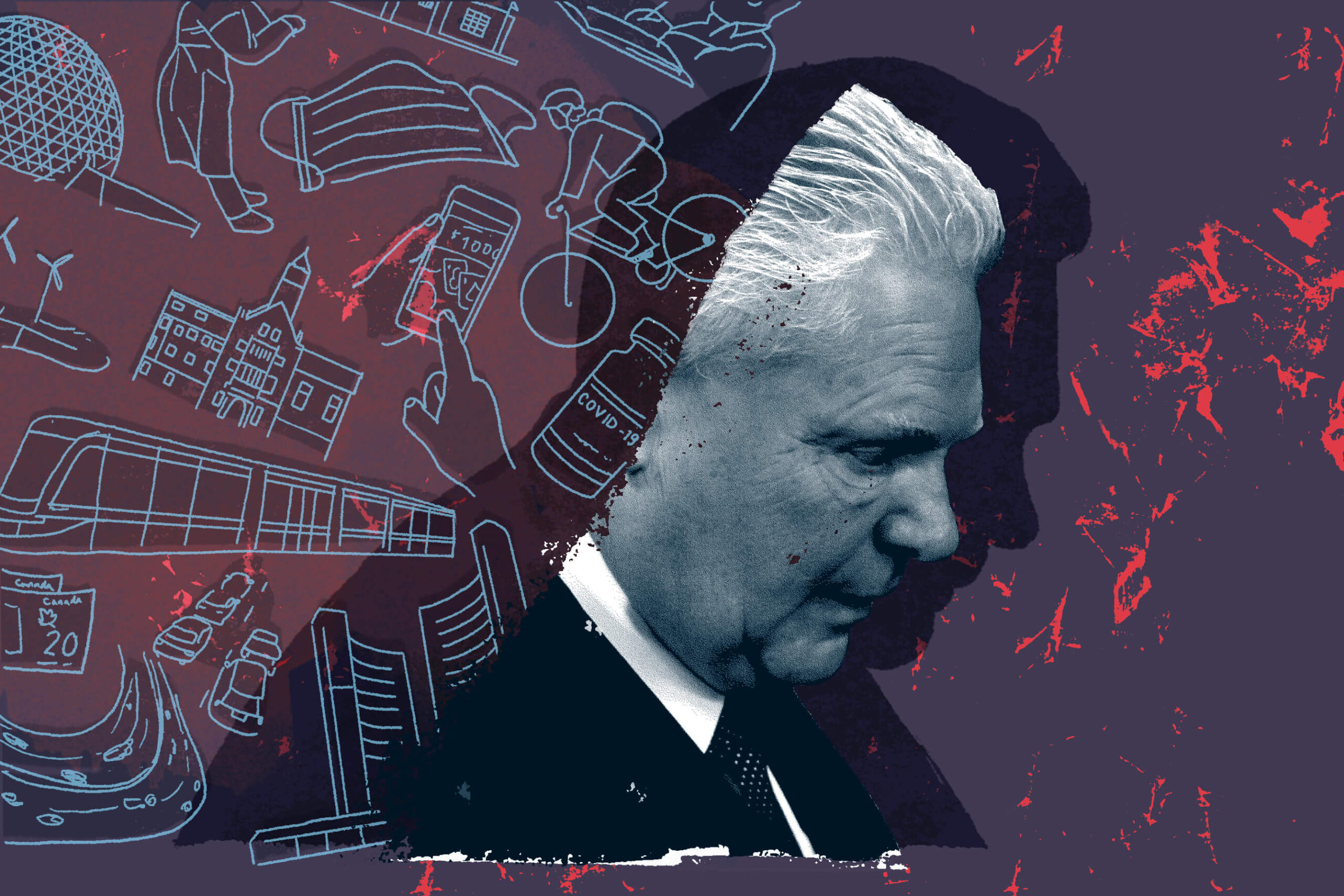
Among his constituents in Don Valley East, a riding that has consistently voted Liberal in past provincial elections, there’s a sense that Doug Ford has a “vendetta” against the community, Shamji said. “He took away our Science Centre without asking us. He took away our ServiceOntario without asking us,” he said, referring to a ServiceOntario office in Flemingdon Park, which was relocated to a Staples outside of the neighbourhood. Residents are fed up with unending traffic congestion and business disruptions from the Eglinton Crosstown, which has been under construction since 2011, and they’re anticipating more congestion and disruptions with the building of the Ontario Line.
It still stings that Ford referred to Shamji’s area of the city as “a sleepy little neighbourhood” during a press conference in his justification for moving the Science Centre, Shamji said. So the fact the government denied funding for the TDSB’s top priority project only reinforces the community’s perception that the premier doesn’t have its best interest at heart, Shamji said.
As he made his way between icy doorsteps, Shamji continued that thought. The “elephant in the room,” he said, is this: “We have a government that prioritizes its friends, its donors, and the people that vote for them.”
Shamji’s rival Roger Gingerich, the Conservative candidate for Don Valley East, declined an interview with The Local to discuss the funding of school infrastructure during the run-up to the election.
“Unfortunately, we [are] absolutely swamped and for the next two weeks we are 100% focused on meeting constituents in the Don Valley East riding, hearing their concerns and wishes for the future of this dynamic riding,” Gingerich wrote in an email.
To TDSB trustee di Dovitiis, the fact that no projects in Toronto are funded this year raises the question of whether the Ministry of Education’s criteria for its Capital Priorities Program is even being followed.
It’s a question that was also raised in the December Auditor General’s report, which found 14 of the 47 projects that were approved in 2019-2020 were initially ranked by Ministry analysts as “Do not recommend for further consideration.”
“The Ministry was unable to provide us with supporting documentation for why these projects were subsequently approved,” the report said.
To remedy this lack of transparency, the Auditor General recommended that the Ministry introduce a formal quantifiable evaluation process to score its criteria, providing a way to objectively rank project submissions. It also recommended that the Ministry documents its rationale for funding decisions and provides school boards with written feedback to help them understand why projects were approved or not.
According to the report, the Ministry accepted the Auditor General’s recommendation, and said it was continuing to refine and strengthen its evaluation process.
If it was working properly, the process would be clear and transparent, and funding decisions would be based on need, Pasma said. “There shouldn’t be political games involved.”
MPPs would have no role in the decision because it’s up to elected local school boards to determine what the local priorities are, she said. As it is, she said, sometimes the Ministry will fund a board’s No. 4 ranked project, or No. 7, instead of its highest-ranking ones, “with no rhyme or reason.”
What Pasma sees as the biggest consequence of not having a clear and transparent funding process is that children are learning in less than ideal, and sometimes unsafe conditions. It also erodes public confidence, she said, leaving people feeling as though their interests come behind those of elected politicians.
It’s a sentiment that Shamji shared between knocking on doors that February afternoon. “Education is so important because if we give our youngsters and our youth the right start, it just alters the entire trajectory of their whole life,” he said.
He paused for a moment to distribute a campaign flyer before continuing. “I think that’s what makes what happened with the capital priorities grant scheme so offensive to our community, to the city of Toronto—that where you are, and seemingly whether your MPP belongs to the government side or the opposition side, impacts whether you get the education that all Ontarians deserve.”
